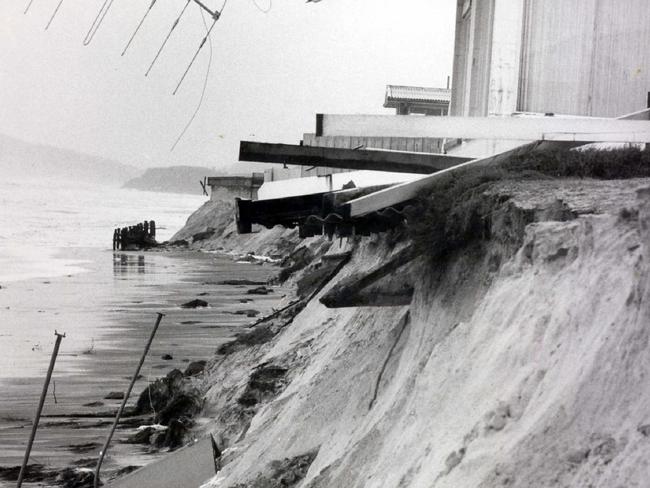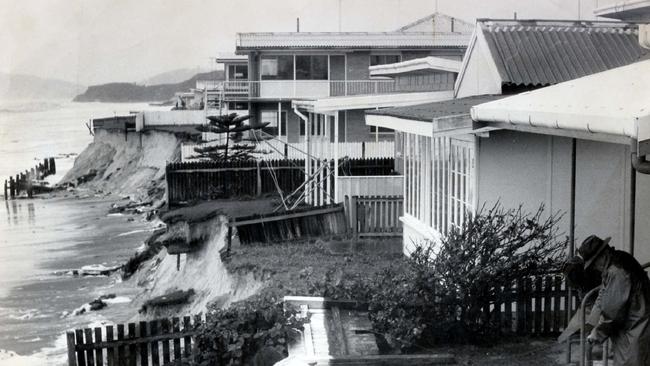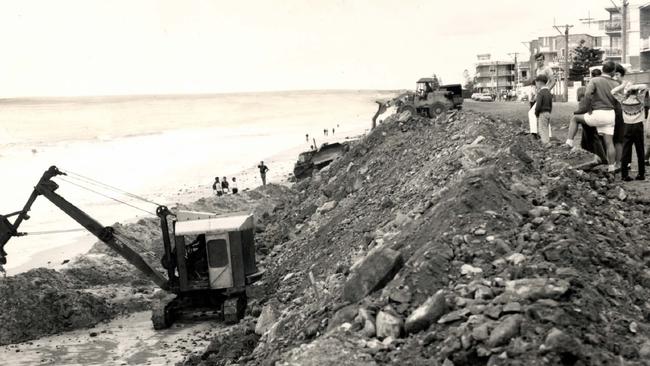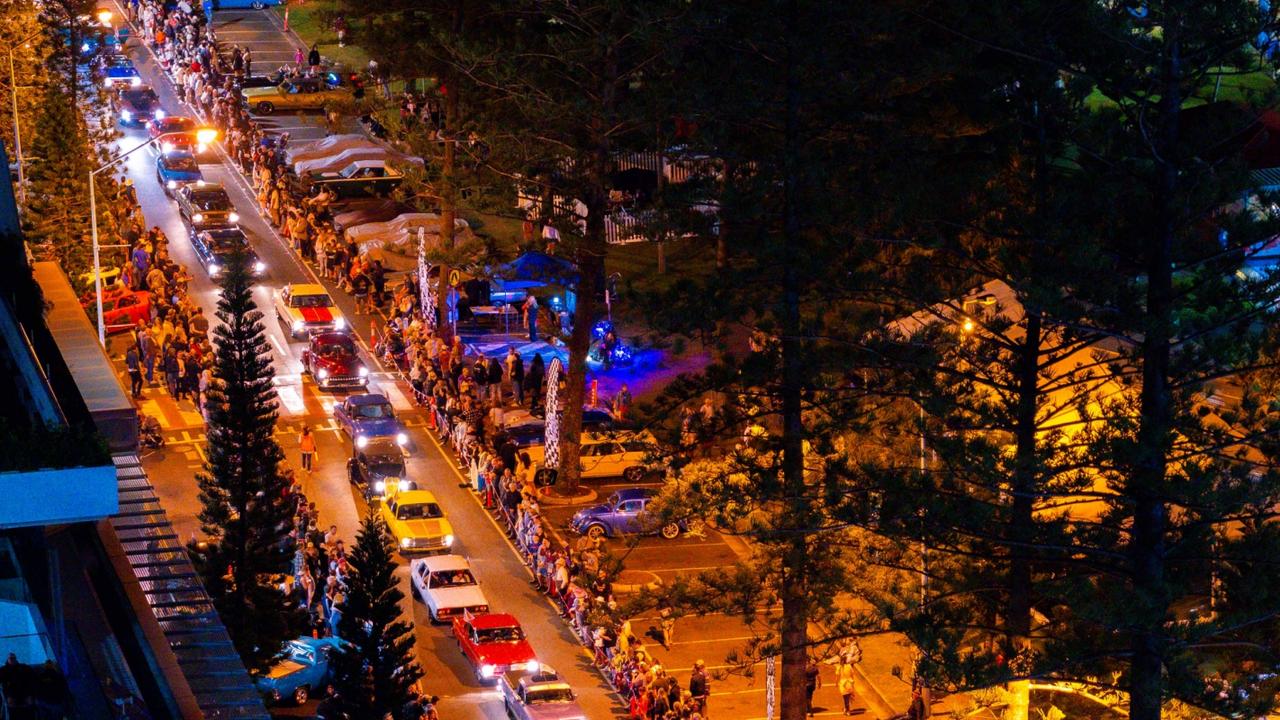Big storms smashed Gold Coast in 1954 and 1967
Cyclone Oma will soon bear down on the city, but it’s not the first one to come so close to shore. More than 60 years ago, 30 people went within a whisker of perishing after the ‘Great Gold Coast cyclone’ swept through.
Lifestyle
Don't miss out on the headlines from Lifestyle. Followed categories will be added to My News.
THIRTY people went within a whisker of perishing on Macintosh Island the last time a cyclone made landfall over the Gold Coast.
It was 1954 and they were saved only by a brief window of calm as the eye of the unnamed cyclone crossed the coast at night, giving lifesavers just enough time to pluck the group from a rooftop and into small boats.
Within a short time the storm resumed and floodwaters surged down the Nerang River.
TATE: ‘PLAN, DON’T PANIC’ AS CYCLONE HEADS CLOSER TO COAST

Their story, recorded in newspapers of the day, was that of a miracle but tragically 26 others were not so lucky as the category 3 storm — later to be unofficially labelled “the Great Gold Coast cyclone’’ — swept south, causing damage all the way down to Sydney.
OTHER NEWS:
‘I give my sick dog medical marijuana’
OP results: Coast’s public schools rank lower than Gympie
Surprise reason behind bikie’s GoFundMe page
Records show that among them was a man who drowned at Murwillumbah.
Ten drowned as a wall of water hit Kyogle in northern NSW.

A seven-year-old boy was swept away as the Richmond River flooded at Lismore.
Two men drowned in an attempted rescue at Casino when their motor boat struck a tree, and four people drowned and a baby went missing when a car was washed into a creek at Armidale.
WILD SURF HITS SNAPPER THANKS TO CYCLONE
The Gold Coast copped a huge pounding again in January 1967 when Cyclone Dinah came out of the Coral Sea and sat off our coastline, inflicting damage without crossing the coast.
Rising waters isolated 500 people at Fingal, where six homes were awash in the noon high tide.
A fishing boat sank.
At Surfers Paradise, the surge caused the Nerang River to burst its banks, spreading 100m along Riverside Drive and Palm Ave. Huge waves caused a section of the Esplanade to collapse and left a gaping five-metre hole in Staghorn Ave.
Reports at the time said the river rose to lap the decking of the old Jubilee Bridge, which was the highway link between Southport and Surfers Paradise.
CYCLONE OMA BEACH EROSION FEARS
Waves surged across the road at Snapper Rocks and destroyed the council’s sandbreak fence at Rainbow Bay.

Amid the high winds, rain and flooding, an incredible rescue drama unfolded at Kirra where two lifesavers, who had entered the massive surf to try to save a boardrider, quickly found themselves in trouble and were swept around to North Kirra, where they clung on to a shark net buoy.
SUBSCRIBE TO THE GOLD COAST BULLETIN — JUST $1 FOR THE FIRST 28 DAYS
They were rescued by Tweed-Coolangatta lifesaving legend John Cunningham, who reached the pair by paddling out on a rescue board. Meanwhile three other lifesavers had swum out from Kirra and in a three-hour drama, were swept north and able to reach the shark net, only to find the pair had been shepherded to safety.
One of the three, beltman Wren Bligh, had dragged 900m of line out to sea in the rescue attempt. Lifesavers Jeff Callaghan and Vic Arnell had swum out with Bligh, pulling the line along to assist him while also diving under massive waves that Callaghan told the Bulletin, in an interview in 2017, had towered up to seven metres over them.
“It was pretty confused. The main sets were about 20ft, or seven metres or so. A friend was at Snapper Rocks and said you could have driven a semi-trailer into the barrel,’’ Callaghan said.
After the storm, engineers had assessed the biggest waves at 10m.
“They were the biggest seas ever seen in European history on the Gold Coast,’’ he said.
Callaghan later worked for the Australian Bureau of Meteorology, specialising in cyclones and east coast lows.


